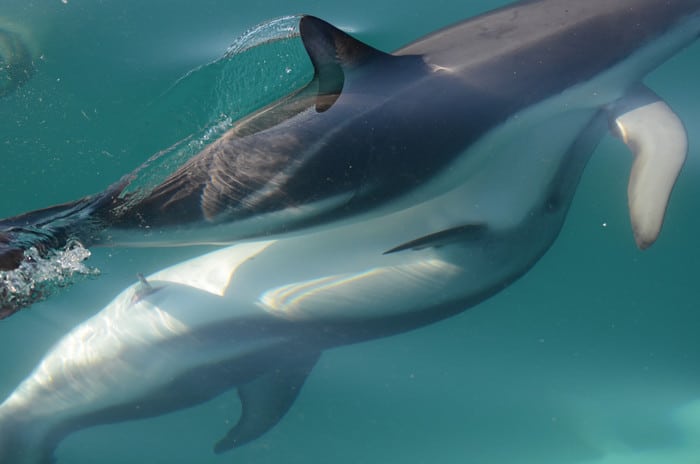Like humans, female dolphins have a functional clitoris, according to a study appearing January 10 in the journal Current Biology. The findings are based on the discovery that the clitoris-like structure positioned in the vaginal entrance of bottlenose dolphins has lots of sensory nerves and erectile bodies.
“The dolphin clitoris has many features to suggest that it functions to provide pleasure to females,” says first author Patricia Brennan, an assistant professor of biological sciences at Mount Holyoke College in Massachusetts.
Scientists have known that dolphins are highly social. They have sex throughout the year as a way of forging and maintaining social bonds. It had been noted also that dolphin females have a clitoris in the vagina in a spot that would make stimulation during copulation likely. There’ve also been reports of females rubbing each other’s clitorises with their snouts, flippers, and flukes.
In the new study, Brennan and colleagues decided to take a closer look at the dolphin clitoris. They looked carefully at clitorises from 11 females that had died naturally. They examined them for the presence, shape, and configuration of erectile bodies. They also looked at how nerve fibers ran through the tissues. What they saw supports the notion of a working clitoris in dolphins.
“Just like the human clitoris, the dolphin clitoris has large areas of erectile tissue that fill up with blood,” Brennan says.
The erectile tissue shape changes as animals become adults, she added, suggesting that it acquires a functional role. The studies further show that the clitoris body has large nerves and many free nerve endings right underneath the skin, which is much thinner there than in the adjacent skin. They also found genital corpuscles much like those previously described in the human clitoris and penis tip, which are known to be involved in the pleasure response.
Overall, Brennan says that the erectile bodies in dolphins are “surprisingly similar” to the shape of the erectile bodies in humans.
“Since the entire pelvis of dolphins is so different to humans, it was surprising to see how similar the shapes were,” she says. “Also, the size of the nerves in the clitoris body was very surprising. Some were larger than half a millimeter in diameter.”
Brennan said they got curious about the dolphin clitoris while studying the evolution of vaginas in dolphins.
“Every time we dissected a vagina, we would see this very large clitoris, and we were curious whether anyone had examined it in detail to see if it worked like a human clitoris,” she says. “We knew that dolphins have sex not just to reproduce, but also to solidify social bonds, so it seemed likely that the clitoris could be functional.”
The researchers note that there’s been little study of the clitoris and female sexual pleasure in nature. In fact, even the human clitoris wasn’t fully described until the 1990s.
“This neglect in the study of female sexuality has left us with an incomplete picture of the true nature of sexual behaviors,” Brennan says. “Studying and understanding sexual behaviors in nature is a fundamental part of understanding the animal experience and may even have important medical applications in the future.”
Her team will continue to examine the clitoris and genitalia of dolphins and many other vertebrates to help fill in these gaps.

